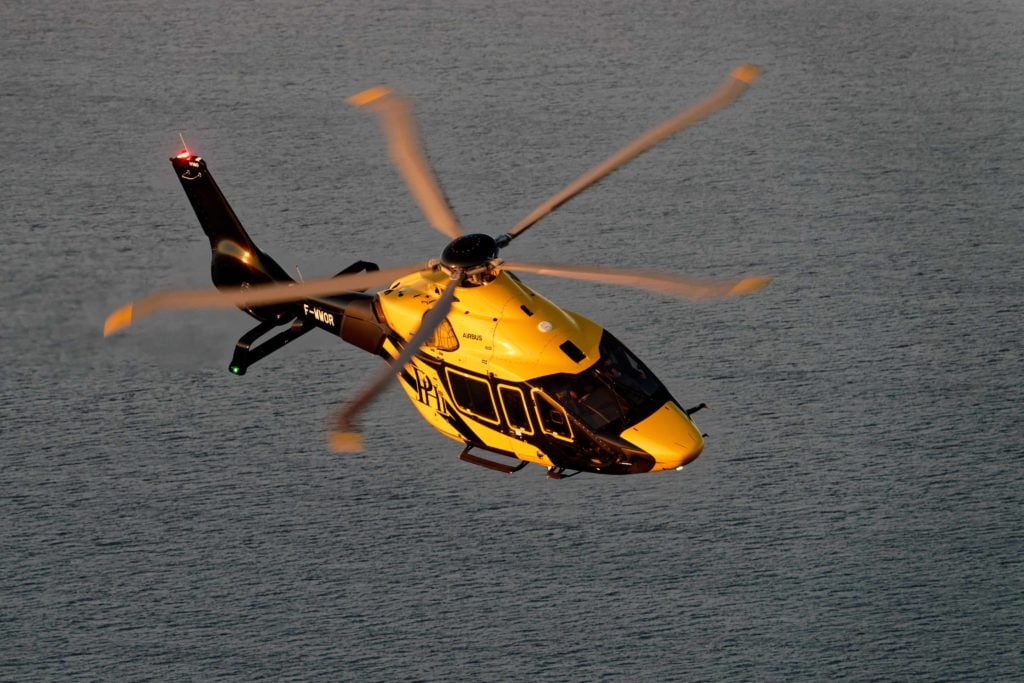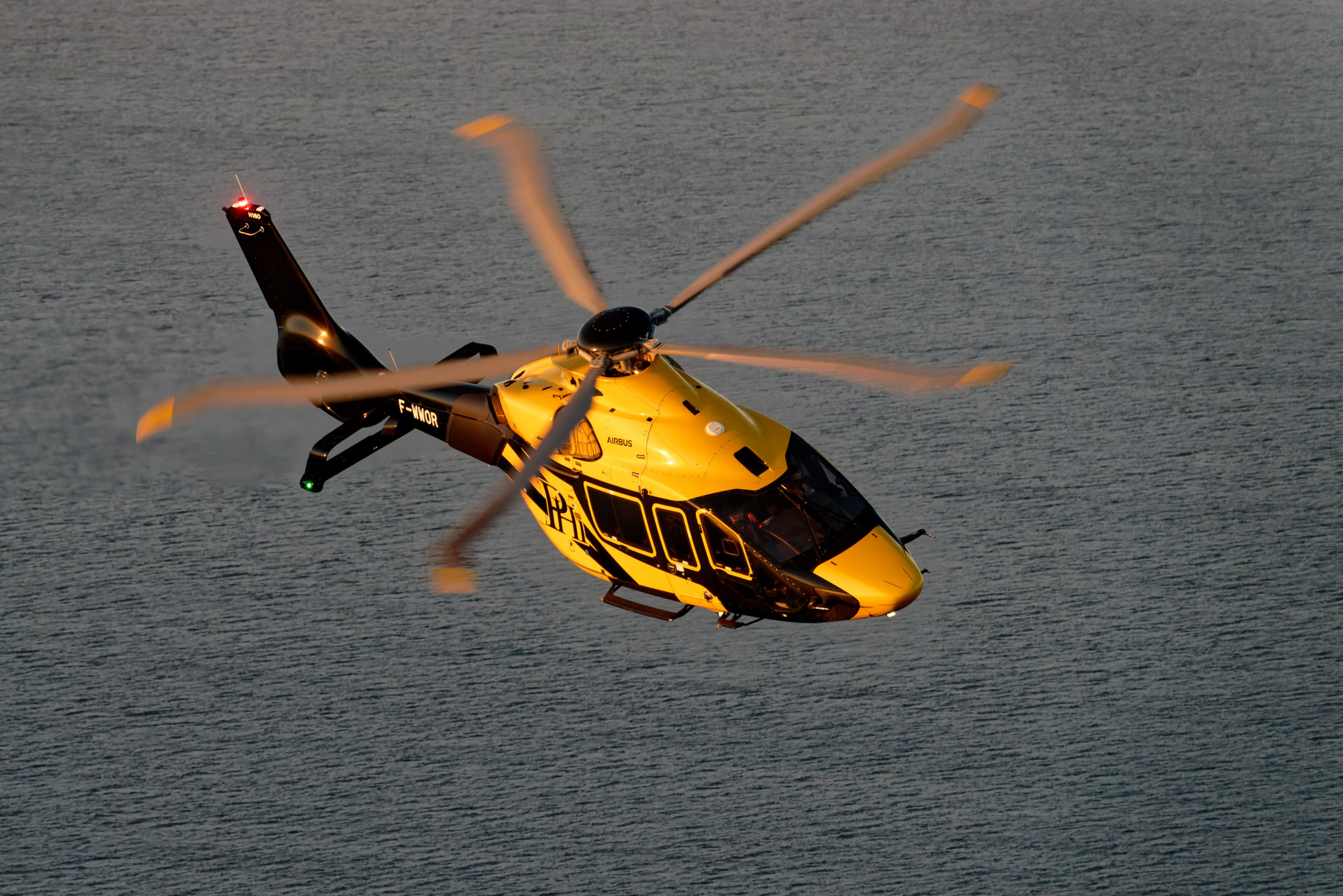Airbus believes it is “nearing the end of the process” to gain Federal Aviation Administration (FAA) approval of its new medium H160, aiming to finally gain certification of the type from the regulator this year.

The H160 was certified by the European Union Aviation Safety Agency (EASA) on July 1, 2020, and Airbus had originally hoped FAA approval would follow soon afterwards. While the timeline for the certification — and entry into service in the U.S. — has continued to be pushed to the right, Airbus is confident it will be secured this year.
“We managed to have our first face-to-face meeting [with the FAA in 2022], which was very important,” Gilles Armstrong, head of the H160 program, told reporters during a media event at the manufacturer’s headquarters in Marignane, France. “We wanted that and the FAA has been very helpful in being available for that. . . . We have to springboard on from that to make sure we complete the process.”
He said an issue affecting the screens of the type’s Helionix avionics system — the subject of a European Union Aviation Safety Agency airworthiness directive (AD) — was one of the topics the company still has to resolve with the FAA.
“If you’ve seen the AD, it’s a very simple task to do in continued airworthiness,” said Armstrong. “In initial certification, it’s something where we need to keep working on the path to certification with the FAA, and that means effectively managing the corrective solution to that in the short term. So that’s what we’re working on with them at the moment.”
An H160 in PHI livery has been at the manufacturer’s facility in Dallas, Texas, for much of the last year, after first arrived there following HAI Heli-Expo 2022.
Armstrong said it had been “very useful” to have an aircraft physically based in the U.S. for Airbus’s discussions with the FAA.
“We’ve done the aircraft maintenance evaluation with the FAA, for example,” he said. “[It’s] been very beneficial to the aircraft there, to try out the tech data, to try out the maintenance tasks, to use the tools — all of those aspects which I think demystify it a bit.”
FAA certification will allow the type to begin service in a new sector — oil-and-gas — as part of a route-proving program in partnership with Shell and PHI. Armstrong said the two companies had been “incredibly understanding” about the ongoing certification process.
“I think we’re very fortunate with our first [U.S.] customers that they understand the process,” he said. “We were very, very transparent with them about what’s going on . . . and they’ve been very understanding with us and we’re very appreciative.”
1,000 hours in its first year
The new medium-lift aircraft has now recorded over 1,000 flight hours since its entry into service with All Nippon Helicopter in December 2021.
The type is now operating in three different continents: in South America (with a private customer in Brazil), Asia (All Nippon in Japan), and Europe (French navy). Other aircraft have been delivered to undisclosed private customers, for a total of “five/six” different customers with “just short of 10” aircraft now in service, Armstrong said.
“Now we’re following this initial phase where we get to see the maturity of the product and how it’s handling and how the customers are living with it,” said Armstrong. “The initial feedback is very positive.”
The first year in operation has also seen it enter a variety of operating segments — newsgathering with All Nippon, VIP operations, and search-and-rescue (SAR) with the French navy.

“They’re having good availability, they’re having good maintenance, as expected,” said Armstrong. “All the parameters are as expected or better. So, at the moment, it’s a particularly good entry into service.”
Airbus took 12 orders for the H160 in 2022, bringing the order book to over 100 aircraft, which includes all mission segments targeted for the type.
The French navy took delivery of the first of an order of six H160s in September. The service is operating them for land-based SAR missions as a stop-gap solution until the H160M Guepard is fielded. The current aircraft are provided through a partnership with Babcock, which sees the company complete the H160s into a SAR configuration, and provide the maintenance for the aircraft once they’re in operation. They are flown by navy pilots.
The first navy aircraft is currently completing operational trials to allow them to enter service “before the summer.”
Next up in terms of configurations is the public services variant, which is being first completed to meet a French Gendarmerie order for 10 H160s.
“It’s a very complete public service configuration with a mission system, sensors, a lot of communications equipment,” said Armstrong. “It can do troop transport, SWAT deployment, and also a forward command center with communications elements.”
Entry into service for this configuration is targeted for 2024, in time for the Paris Olympics. Final assembly has begun on the first two Gendarmerie aircraft, with a third aircraft in production. Airbus has a mission test bench running in parallel, which brings the different mission and communication systems together on a ground testbed.
An air medical configuration will be the next to be developed, after the public services variant is completed, said Armstrong.
The speed with which aircraft are moving through the production line increased threefold across 2022, as the program begins to hit its stride in terms of deliveries.
“The [ramp up] plan is very aggressive, so we have to deliver those sorts of improvements,” said Armstrong.
Meanwhile, the company continues to build hours on its “dynamic helicopter zero” — a representative aircraft housed in a test rig for maturity testing. Launched last year, the aircraft will soon reach 1,000 hours of representative “flight,” with 3,000 hours being the ultimate target.
“It gives us advanced learning on how the aircraft’s going to behave in service,” said Armstrong. “We get to learn anything that there is to learn before the [in-service] fleet reaches it.”
Finally, the manufacturer is working on the first prototypes of the H160M Guepard for the French military. It plans to have a civilian prototype flying with military equipment this year. The French army variant will be the first developed and delivered, followed by the navy variant.









